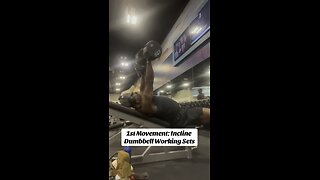Why Training Experts Are Wrong About RPE and RIR
The debate around the effectiveness and application of RPE (Rate of Perceived Exertion) and RIR (Reps in Reserve) in training programs is significant. Many training experts champion these methods as essential tools for gauging workout intensity and managing fatigue. However, criticisms argue that these methods might be misunderstood or misapplied. Here’s why some believe training experts might be wrong about RPE and RIR:
1. Subjectivity and Variability
Rate of Perceived Exertion (RPE) is inherently subjective. It's based on an individual's perception of effort during exercise, which can vary widely between individuals and even for the same person on different days depending on factors like sleep, nutrition, and stress.
Reps in Reserve (RIR) involves estimating how many more reps one could do before reaching failure. This estimation requires a high level of self-awareness and experience with resistance training, which beginners might not have.
2. Lack of Precision
Both RPE and RIR lack the precision that other quantitative methods, like percentage-based training, can offer. While RPE and RIR provide flexibility, they can lead to inconsistencies in training intensity, potentially affecting the progression and outcomes.
3. Potential for Misuse
There's a risk of misuse, especially among less experienced athletes who may struggle to accurately assess their exertion levels. Misjudging RPE or RIR could lead to training either too hard or not hard enough, thus not meeting the desired training stimuli for adaptation.
4. Overreliance on Internal Feel
An overreliance on how an individual 'feels' during training might ignore more critical measures of performance and adaptation. For example, athletes might push through fatigue when they should rest, or hold back due to temporary discomfort that doesn’t necessarily correlate with their true capacity or the requirements of their training program.
5. Inadequate for All Types of Training
RPE and RIR are primarily used in strength and conditioning contexts. They may not translate as well to other types of training, such as cardiovascular or skill-based sports, where different metrics might be more appropriate or where the perception of effort does not directly correlate with the intended training effect.
Conclusion
While RPE and RIR are valuable tools in the toolbox of training methods, they are not without flaws. Their effectiveness largely depends on the context of their use, the experience of the athlete, and the specific goals of the training. Coaches and trainers should consider these limitations and complement RPE and RIR with other objective measures to ensure a comprehensive approach to training and athlete development.
Buy MTS Nutrition Immortal HERE! https://www.tigerfitness.com/products/mts-nutrition-immortal-vitamin-pack
-
 5:02
5:02
sergeantmatcscs
1 month ago20240517 Day 768 Part-3 - Training With Intent
7 -
 8:58
8:58
NewAge Workout
1 month agoPreventing Injury When Training Calisthenics
40 -
 19:20
19:20
Lee Weiland
1 month agoThis Training Makes You SMARTER
62 -
 2:46
2:46
sergeantmatcscs
1 month ago20240522 Day 773 Part-2 - Post-Conditioning Pressing
2 -
 1:00
1:00
sergeantmatcscs
25 days ago20240528 Day 779 Part-2 - Post-Conditioning Pressing & Triceps
1 -
 8:33
8:33
sergeantmatcscs
27 days ago20240525 Day 776 Part-2 - FAQs: Why use Watts over Heart Rate?
1 -
 1:00
1:00
sergeantmatcscs
1 month ago20240518 Day 769 Part-2 - Post-Conditioning Pressing
-
 0:59
0:59
sergeantmatcscs
1 month ago20240521 Day 772 Part-2 - Post-Conditioning Pulling
-
 12:42
12:42
DrChalmers1
30 days agoDr Chalmers Path to Pro - Work Outs
52 -
 43:48
43:48
Dr. Todd Lee's Anabolic University
24 days agoHOW TO GROW: Rule Of 2 — IFBB Pro Bodybuilder and Medical Doctor's System
195